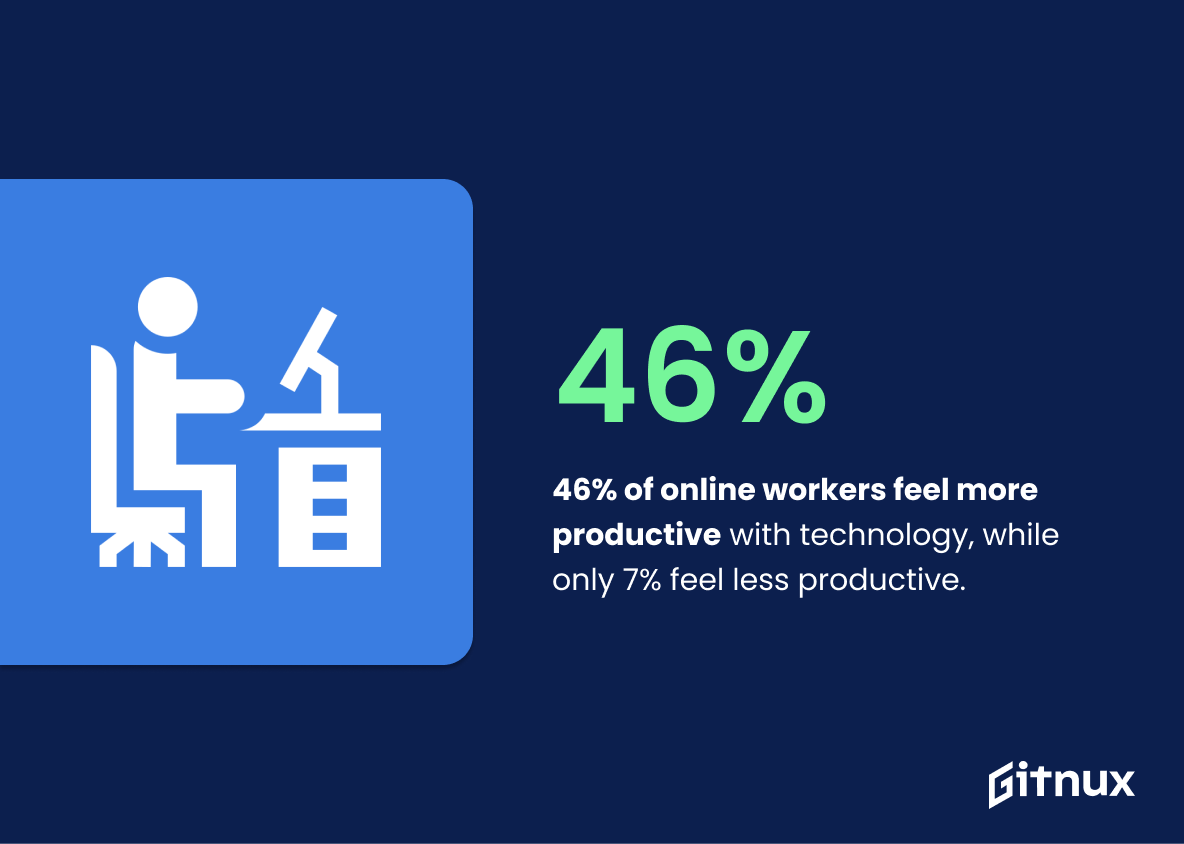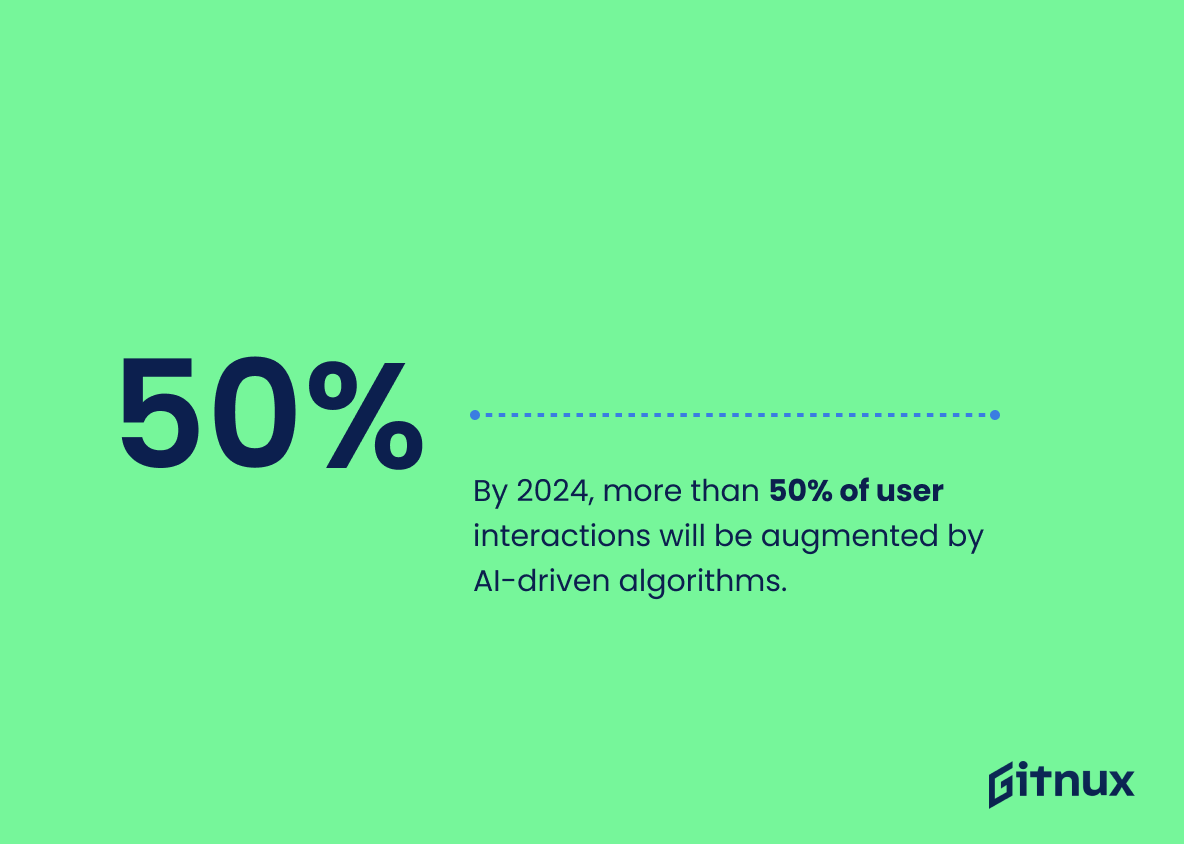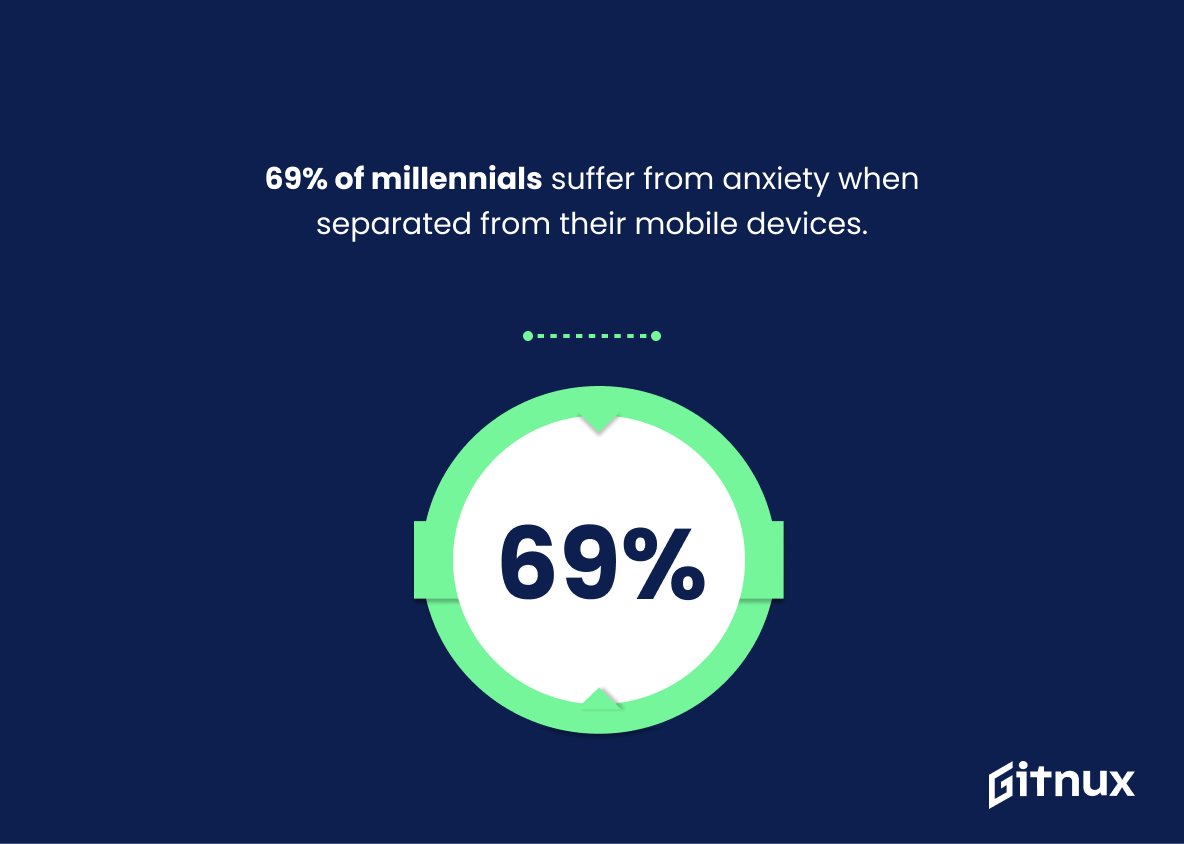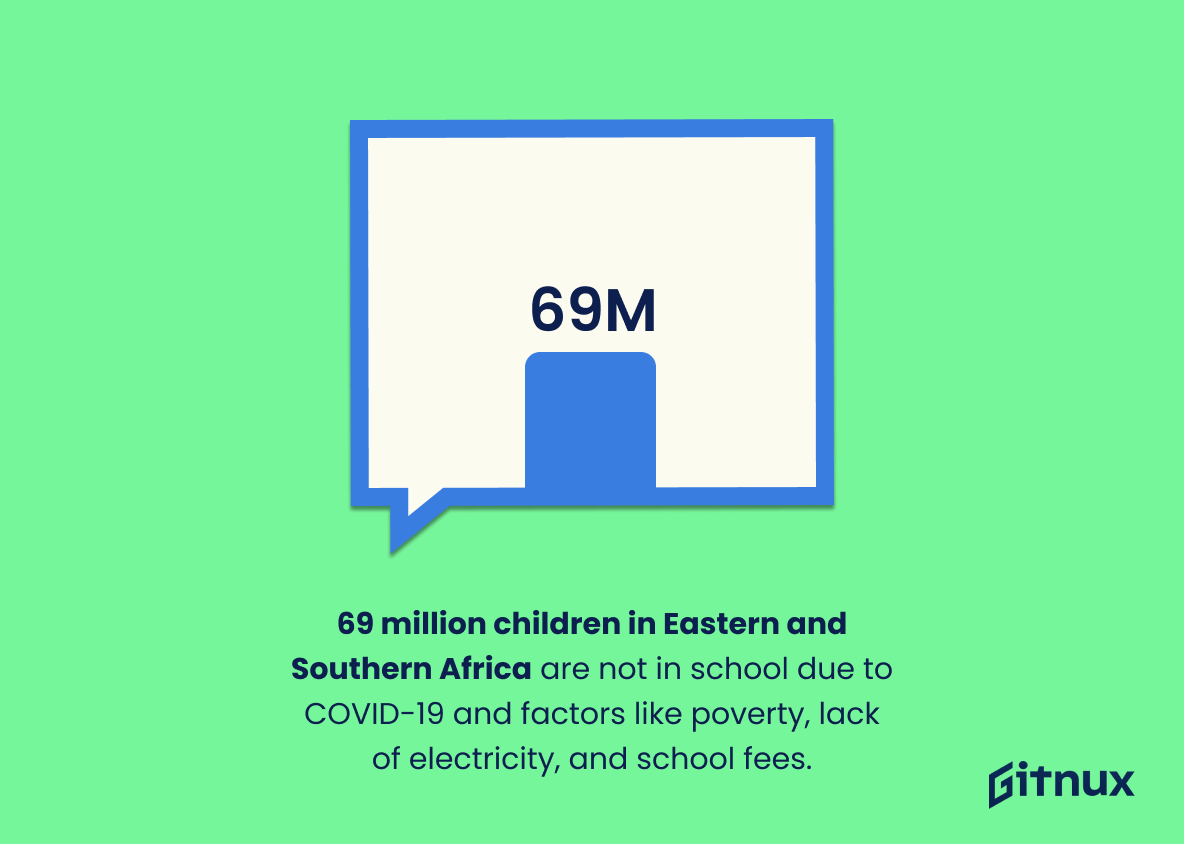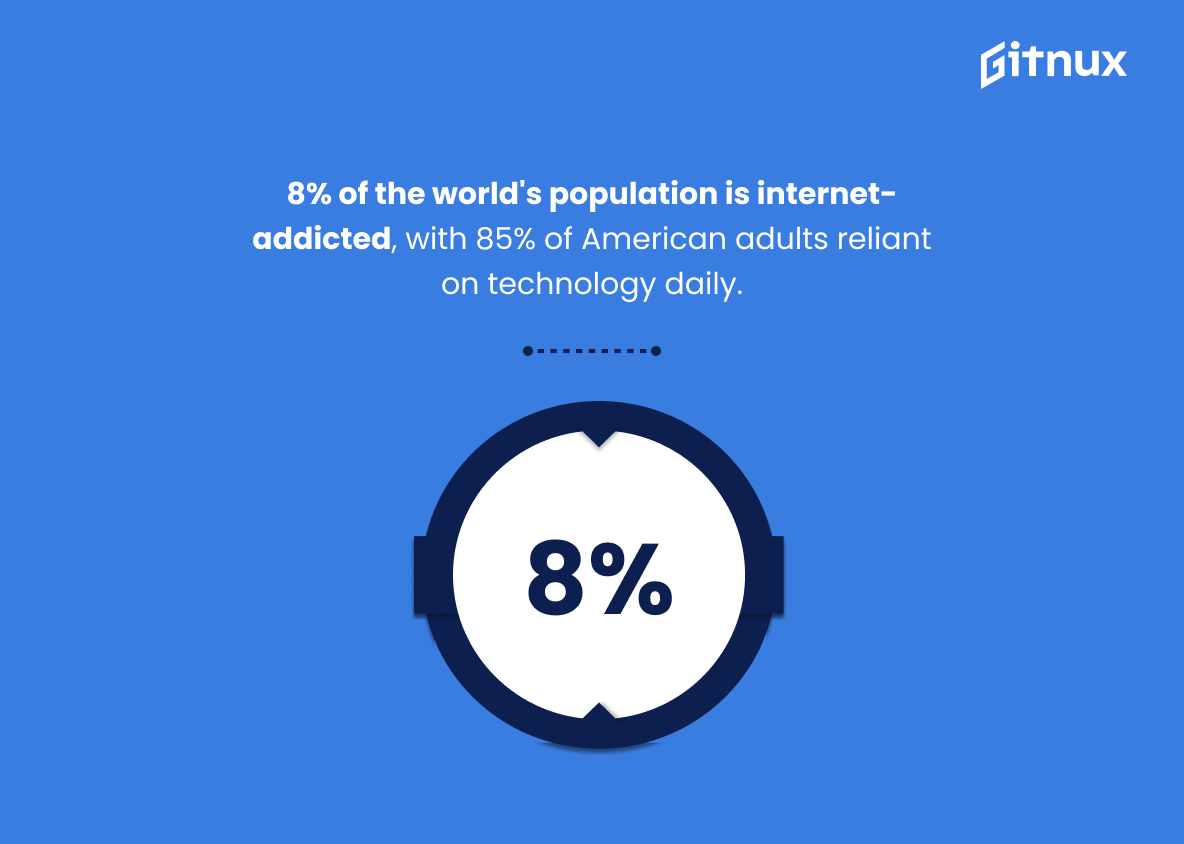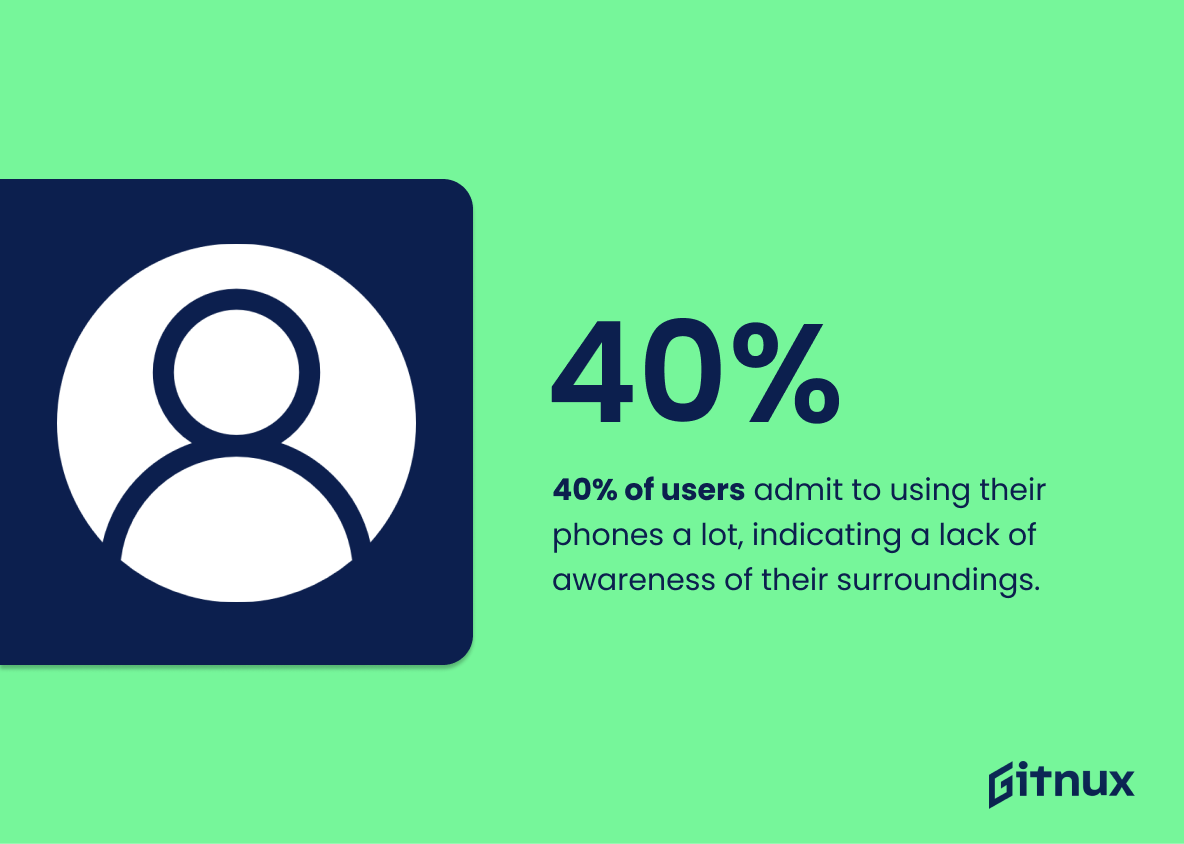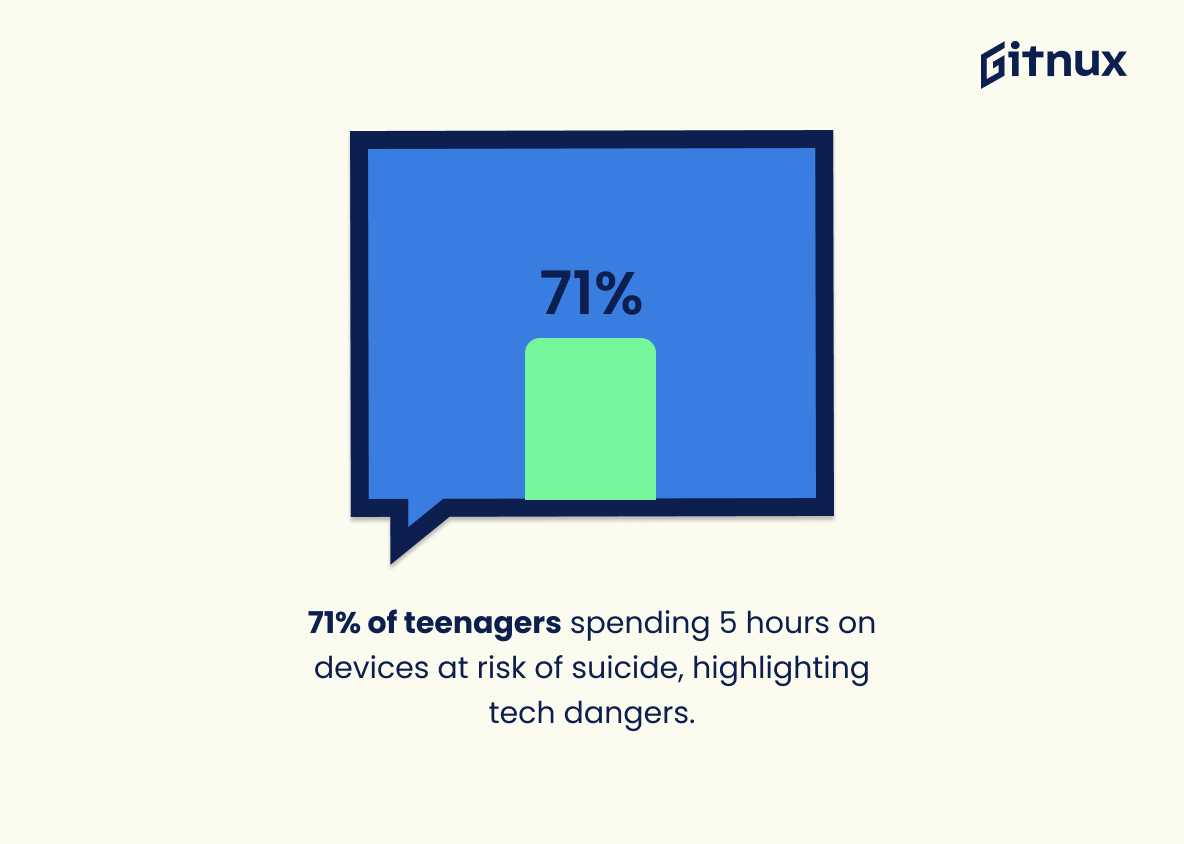Technology has become an integral part of our lives, and it’s no surprise that the use of technology is growing rapidly. From smartphones to computers, technology has become a part of our everyday lives. But how dependent are we on technology?
In this blog post, we’ll explore the statistics behind our dependence on technology, and how it affects our lives. We’ll look at how technology has changed the way we work, communicate, and live, and what the implications of this dependence are. So, let’s dive into the data and see what we can learn about our dependence on technology.
Dependence On Technology: The Most Important Statistics
77% of society relies too much on technology to succeed, indicating an over-dependence on technology.
48% of the world’s population owns a smartphone.
Dependence on Technology: Statistics Overview
46% of working online adults feel more productive due to the internet, email and cell phones, while only 7% feel their productivity has dropped. This statistic is important in the context of Dependent On Technology Statistics because it shows that, contrary to popular belief, digital tools can actually be beneficial to productivity in the workplace. This could be useful information for employers who are considering implementing digital tools in the workplace.
96% of teachers believe technology has a positive impact on children’s lesson participation and learning, with 56%, 49%, and 54% of respondents believing it makes students more engaged, makes teachers more efficient, and helps them plan more exciting lessons, respectively. This statistic matters in the context of dependent on technology statistics because it shows that technology can be a beneficial tool in the classroom, helping to engage students, make teachers more efficient, and plan more exciting lessons.
By 2024, more than 50% of user interactions will be augmented by AI-driven algorithms. This statistic is important because it shows the increasing reliance of users on technology and AI-driven algorithms. This shift in user behaviour is indicative of the growing need for technology and the increasing dependence of users on technology. As global data creation is projected to grow exponentially, these technologies promise access to virtually unlimited compute power and massive data sets, making it easier and cheaper to test, launch, and scale innovations quickly. This statistic is important in understanding the impact of technology on our lives and how it is changing the way we interact with the world.
Technology has improved safety and emergency response by detecting changes in location, force, and motion. This statistic is important in the context of Dependent On Technology Statistics because it highlights the positive impact of technology on safety and emergency response. By detecting changes in location, force, and motion, responders are able to detect emergencies more quickly and accurately, which can help save lives.
A 2017 study found that young adults aged 19-32 who used social media more often were 3x more likely to feel socially isolated than those who did not use social media as often. This statistic is important because it shows that overuse or dependence on technology can have adverse psychological effects. It is a reminder that technology, while designed to bring people together, can have the opposite effect in some cases. This is an important reminder to be mindful of how much time is spent on technology and to be aware of the potential psychological effects of overuse.
69% of millennials suffer from anxiety when separated from their mobile devices. This statistic is important because it shows how dependent millennials are on technology. It is concerning that such a large percentage of millennials experience anxiety when they are away from their phones, indicating that they rely heavily on their devices for communication and connection.
Food growers are increasingly relying on technology to increase productivity, requiring reskilling in the coming decade. This statistic is important because it highlights how food growers are becoming increasingly dependent on technology to increase productivity and efficiency. This means that in order for food growers to remain competitive, they will need to become familiar with new technology and reskill their workforce. This could have a significant impact on the industry as a whole, as it may require a shift in the way food growers approach their operations.
Best Western saw a 2.2x increase in time spent with Conversations when using personalization with IBM Watson Advertising, averaging 42 seconds per session. This statistic matters because it demonstrates the power of personalization when it comes to engaging with customers and increasing traffic to locations. It also shows that IBM Watson Advertising is a reliable and effective tool for achieving these goals.
69 million children in Eastern and Southern Africa are out of school due to COVID-19 and pre-pandemic factors, such as poverty, lack of access to electricity, and inability to pay school fees. This statistic is important in the context of Dependent On Technology Statistics because it highlights the fact that many people in Sub-Saharan Africa lack access to the technology and resources necessary to take advantage of the opportunities that digital technology has to offer. This lack of access to technology and resources can have a significant impact on the educational and economic opportunities available to these individuals.
African Least Developed Countries (LDCs) published 7 scientific and technical journal articles per 1 million people in 2013, compared to 1,100 in Organisation for Economic Co-operation and Development countries. This statistic is important in the context of Dependent On Technology Statistics because it highlights the disparity between LDCs and other countries in terms of access to and utilization of technology. It also shows the need for increased access to technology in LDCs in order to bridge the gap and ensure that all countries have equal access to the resources and knowledge necessary to advance their societies.
77% of society relies too much on technology to succeed, indicating an over-dependence on technology. This statistic matters in the context of Dependent On Technology Statistics because it highlights the need for individuals to be aware of the potential pitfalls of relying too heavily on technology. It also shows how technology can be both a blessing and a curse, as it can provide great benefits but also lead to an unhealthy reliance on it.
8% of the global population is addicted to the internet, and 85% of American adults can’t go a day without using it – this shows how dependent people have become on technology. This statistic matters because it demonstrates how reliant people have become on technology, and how it has become a part of everyday life. This is important to consider when looking at the impact of technology on society, and how it can be used to improve people’s lives.
40% of users admit to using their phones a lot, indicating a lack of awareness of their surroundings. This statistic matters in the context of Dependent On Technology Statistics because it shows that a large portion of the population is not conscious of their surroundings when using their phones, suggesting that they are heavily reliant on technology. This can have a negative impact on their physical and mental health, as well as their social interactions.
71% of teenagers who spend 5 hours on electronic devices are at risk of suicide, highlighting the potential dangers of technology. This statistic is important because it demonstrates the potential risks of excessive technology use, particularly among teenagers. It highlights the need for parents and educators to be aware of the potential dangers of technology and to be mindful of how much time teenagers are spending on electronic devices. It also emphasizes the need for more research into the effects of technology on mental health and well-being.
95 million jobs could be created through the mass adoption of mobile banking technologies, which is a testament to the potential of technology to create job opportunities. This statistic is important because it highlights the potential of technology to create jobs and stimulate economic growth. It also shows that technology can be a powerful tool for creating new opportunities and helping people find employment. This is especially important in the context of Dependent On Technology Statistics, which show that many people are increasingly reliant on technology for their livelihoods.
81% of college students believe digital learning technology improved their grades, making it easier to excel in their studies. This statistic matters in the context of Dependent On Technology Statistics because it shows how technology can be used to improve educational outcomes. It suggests that technology can be used to make learning more efficient and effective, which could lead to better academic performance. Additionally, it highlights the importance of technology in the modern educational landscape, and how it can be used to help students succeed.
63 times a day, 30% of people in the US rarely unplug from their devices, showing a high dependence on technology. This statistic matters because it shows the high dependence on technology that people in the US have. It shows that people are constantly using their devices, and rarely unplugging from them. This statistic is important because it highlights the need for people to be aware of their technology consumption and to take breaks from their devices.
80% of smartphone users check their phones within one hour before bed and 35% within 5 minutes, illustrating the high rate of technology consumption. This statistic is important because it highlights how dependent people are on technology and how quickly it has become a part of our daily lives. It also shows how quickly technology has become a part of our lives and how it is influencing our behaviour.
48% of the world’s population owns a smartphone. This statistic is important in the context of Dependent On Technology Statistics because it shows the extent to which technology has become integrated into our lives. It shows that a large portion of the population is using technology on a daily basis and is likely to be dependent on it for many aspects of their lives. This statistic is a good indicator of the level of technology dependence in the world.
Conclusion
In conclusion, the statistics on dependent on technology are concerning. Technology is a powerful tool that can be used to improve our lives, but it can also be used to create a dependency that can have negative consequences.
It is important to remember that technology should be used in moderation and that it should not be relied upon as a crutch. By being mindful of our technology use and making sure to take breaks from it, we can ensure that technology does not become a hindrance in our lives.
References
1 – https://www.pewresearch.org/internet/2014/12/30/technologys-impact-on-workers/
2 – https://blog.gitnux.com/technology-in-education-statistics/
3 – https://www.mckinsey.com/capabilities/mckinsey-digital/our-insights/tech-at-the-edge-trends-reshaping-the-future-of-it-and-business
4 – https://alatpres.com/2021/04/26/how-technology-is-making-the-world-safer/
5 – https://www.medicalnewstoday.com/articles/negative-effects-of-technology
6 – https://lendedu.com/blog/millennials-anxiety-not-having-cell-phone
7 – https://www.weforum.org/agenda/2021/06/farming-data-new-agricultural-job-skills/
8 – https://www.jigsawacademy.com/blog/5-industries-which-rely-heavily-on-artificial-intelligence-in-2022/
9 – https://afr-ix.com/why-is-africa-lagging-behind-the-world-in-technology/
10 – https://www.un.org/en/chronicle/article/closing-technology-gap-least-developed-countries
11 – https://www.uopeople.edu/blog/society-too-dependent-on-technology/
12 – https://techjury.net/blog/technology-addiction-statistics/#gref
13 – https://comparecamp.com/technology-addiction-statistics/
14 – https://lifebeyond.one/blogs/tech-impact/smartphone-addiction-technology-dependency-science-and-statistics
15 – https://leftronic.com/blog/how-fast-is-technology-growing-statistics/
16 – https://www.linkedin.com/pulse/comprehensive-look-statistics-technology-use-learning-allen-garber-1c?trk=pulse-article_more-articles_related-content-card
17 – https://goremotely.net/blog/tech-addiction-statistics/
18 – https://comparecamp.com/technology-addiction-statistics/
19 – https://goremotely.net/blog/tech-addiction-statistics/
20 – https://goremotely.net/blog/tech-addiction-statistics/
ZipDo, cited June 2023: Dependence On Technology Statistics
